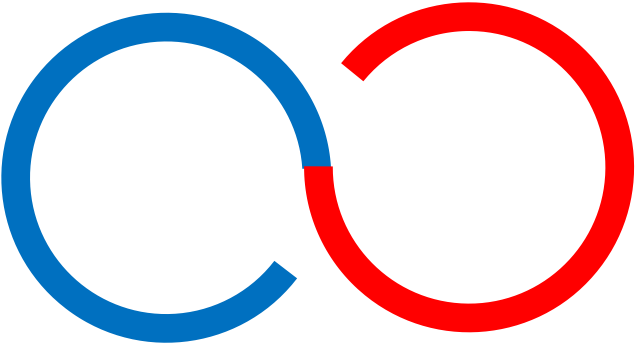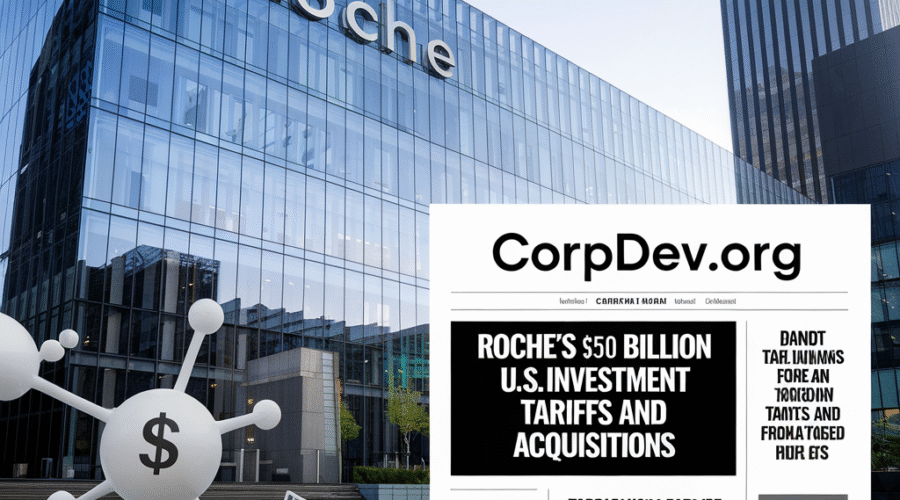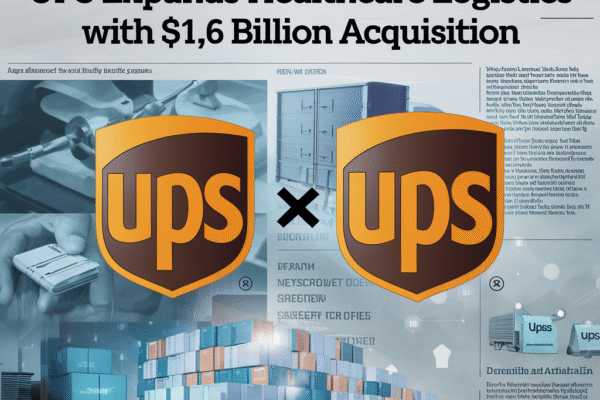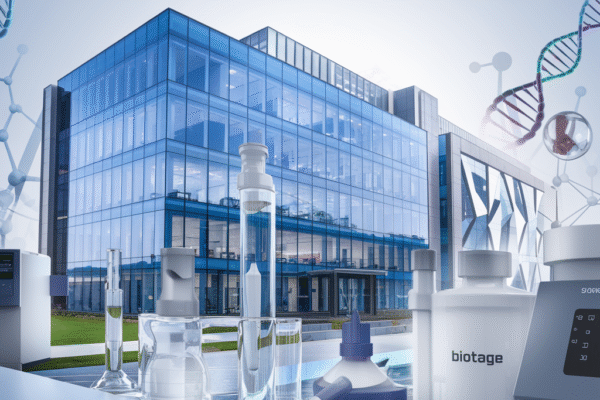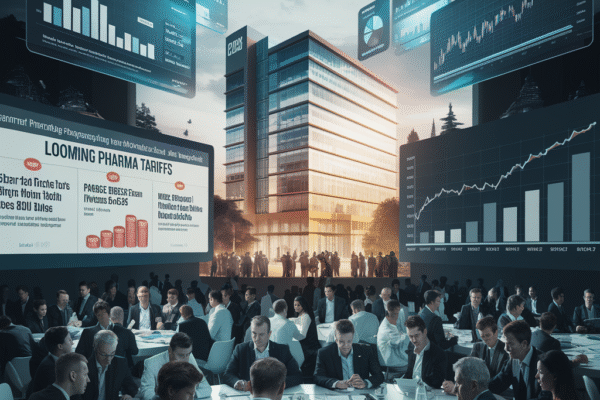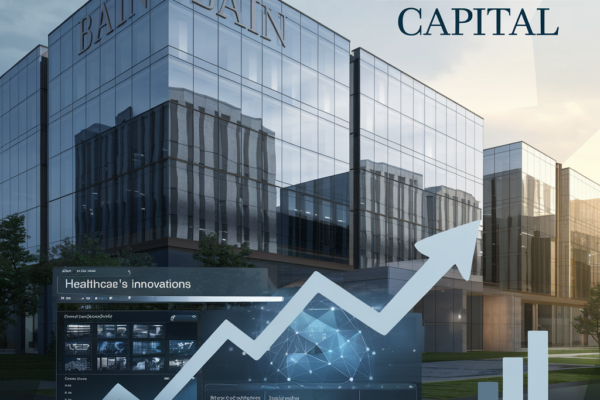As global trade tensions escalate under the Trump administration’s tariff policies, Roche AG has emerged as a pivotal player in reshaping pharmaceutical manufacturing strategies. The Basel-based giant’s recent $50 billion commitment to U.S. operations underscores a sector-wide scramble to mitigate financial risks while maintaining competitive advantage. This strategic pivot comes as CEO Thomas Schinecker warns that impending tariffs could significantly complicate merger and acquisition calculus – a revelation that sends ripples through an industry already grappling with geopolitical uncertainty and technological disruption[2][4][5].
Roche’s Defensive Offensive: Manufacturing as Tariff Shield
The $50 Billion Blueprint
Roche’s five-year investment plan represents one of the largest capital commitments in pharmaceutical history, targeting 13 manufacturing sites and 15 R&D facilities across eight states[5][6][8]. The blueprint includes:
“A gene therapy manufacturing plant in Pennsylvania, continuous glucose monitoring production in Indiana, and an AI-driven research hub at Harvard’s Enterprise Research Campus in Massachusetts[8].”
Notably, 40% of the investment ($20 billion) targets biologics manufacturing upgrades, with $8 billion dedicated to new bioreactor installations and $2 billion for cutting-edge purification systems[3]. This infrastructure push aims to achieve pharmaceutical export surplus by 2030, mirroring the company’s existing diagnostics trade balance[5][7].
Employment and Economic Impact
The initiative promises to create 12,000 new jobs – 1,000 direct Roche positions and 11,000 in supporting industries[7]. This employment surge concentrates in high-value sectors: 3,000 roles in advanced therapeutics manufacturing, 2,500 in AI-driven drug discovery, and 1,200 in obesity treatment production[6][8]. Such targeted hiring reflects Roche’s strategic bet on next-generation therapies, particularly its $2.7 billion Carmot Therapeutics acquisition and Zealand Pharma partnership in weight-loss medications[8].
The Tariff-M&A Calculus
Schinecker’s Strategic Dilemma
While publicly maintaining a “relaxed” stance due to Roche’s entrenched U.S. infrastructure[4], Schinecker acknowledges the tariff threat’s chilling effect on dealmaking. “The financial case for acquisitions becomes more difficult when you layer in 25-30% tariff contingencies,” the CEO recently stated[2]. This tension manifests in Roche’s dual strategy: aggressive domestic investment paired with cautious international engagement.
Valuation Volatility in Key Sectors
Analysts identify three vulnerable M&A sectors:
“1) Transatlantic antibody deals (15-20% premium erosion potential) 2) Asian API manufacturers (30% cost uncertainty) 3) European medical device makers (tariff overlap risks)[2][3]”
The company’s recent $1.65 billion petrelintide partnership with Zealand Pharma illustrates adapted deal structures – featuring phased payments tied to U.S. manufacturing milestones[8].
Industry-Wide Realignment
The $160 Billion Club
Roche joins Novartis ($50B), J&J ($55B), Eli Lilly ($30B), and Merck ($25B) in committing to U.S. manufacturing – a collective $160 billion bet against tariff exposure[3][5][7]. This capital flood concentrates in three corridors:
“1) Boston-Cambridge biologics cluster 2) Indiana device manufacturing belt 3) Pennsylvania gene therapy nexus[5][6][8]”
Jefferies analyst Tycho Peterson notes: “Greenfield projects face 18-24 month delays versus 6-9 month retrofits, creating near-term capacity bottlenecks[3].”
Regulatory Chess Game
The Trump administration’s evolving tariff playbook forces complex maneuvers:
| Policy Lever | Industry Response | Timeline Impact |
|---|---|---|
| Pharma-specific tariffs | Accelerated CAPEX | 2025-2027 |
| API import duties | Vertical integration | 2026-2030 |
| Medical device taxes | Portfolio rationalization | 2025-2026 |
Roche’s diagnostics division, already maintaining U.S. export surplus, serves as template for pharmaceutical realignment[5][7].
Leadership and Strategic Vision
Schinecker’s Balancing Act
The Roche CEO navigates competing priorities:
“We must honor our 110-year U.S. legacy while remaining a truly global enterprise[5][8].”
This philosophy manifests in the Massachusetts AI hub’s dual focus: cardiovascular drug discovery and tariff scenario modeling using quantum computing prototypes[8].
Succession Planning in Uncertain Times
With Schinecker’s contract up for renewal in 2026, Roche’s board emphasizes “tariff resilience” as key leadership criteria. Internal candidates include:
“1) Diagnostics head Dr. Lisa Sanders (U.S. infrastructure expert) 2) Pharma COO James Harrison (M&A specialist) 3) Chief AI Officer Dr. Wei Zhang (tech strategist)[6][8]”
Conclusion: The New Pharma Calculus
Roche’s monumental investment reflects broader industry realities: geopolitical risk now outweighs pure scientific merit in capital allocation decisions. As tariff walls rise, the M&A landscape fractures into regional blocs, with premium valuations reserved for targets boasting U.S. manufacturing footprints. The coming decade will test pharma’s ability to balance national policy demands with global health imperatives – a tightrope walk where missteps could cost billions[2][3][5][8].
Sources
https://www.bioworld.com/articles/719364-roche-follows-other-pharmas-committing-50b-in-us-investment, https://www.fiercebiotech.com, https://www.genengnews.com/topics/bioprocessing/roche-commits-50b-to-u-s-manufacturing-rd-as-tariffs-loom/, https://www.swissinfo.ch/eng/multinational-companies/roche-ceo-relaxed-over-trump-tariff-plans/88859854, https://www.biopharmadive.com/news/roche-50-billion-us-drug-diagnostics-manufacturing/745973/, https://www.mmm-online.com/news/roche-pledges-investment-in-us-trump-pharma-tariffs/, https://www.nbcphiladelphia.com/news/business/money-report/roche-to-invest-50-billion-in-the-u-s-as-tariff-threat-lingers/4165737/?os=fuzzscan3WOtr, https://medcitynews.com/2025/04/roche-pharmaceutical-manufacturing-research-tariffs-rhhby/
